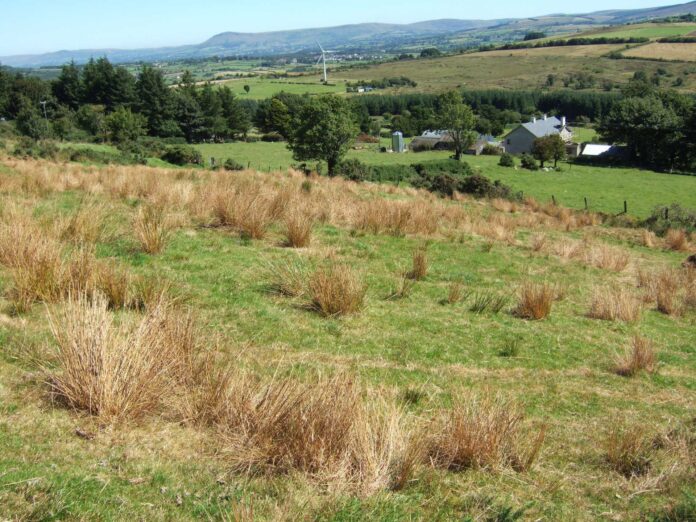A number of bedding materials are permitted within the organic farming standards in Ireland, according to Teagasc’s organic specialist, Joe Kelleher.
He listed some feasible and prohibited animal bedding options for organic farmers during the most recent episode of the Let’s Talk Organics – Converting beef housing to meet organic standards – webinar.
“Straw is the most common one obviously, but equally, rushes are fairly prominent,” he told viewers of the virtual information session.
“You can cut rushes, wilt them, and bale them up, as they are perfectly acceptable as a bedding material.”
“Woodchip is the other one that is allowed, but peat bedding is not permitted within the organic standards.”
“Sawdust and shavings are permitted, but they must be untreated.”
“There are options there. If you are in a tillage part of the country and can get straw at good value, then that is probably the best option.”
“But if you are further away from tillage areas, then rushes could very well be a viable option for you,” he explained to farmer viewers.
Straw use
He then outlined the following factors which determine straw usage:
- Shed stocking rate – The more animals you have in a shed, the more straw you will require;
- Feeding area separate to lying area – In some cases, farmers have no slatted area, and cattle stand on straw consuming feeds instead of having a slatted area for this and then a bedded area;
- Traffic across lying area – how many cattle and how much space?
- Cleaning shed out regularly versus allowing straw to accumulate – Both acceptable in organics, but if you clean out regularly, you will find straw will last longer;
- Positioning of water trough – Do not place at the back of a shed, as if it leaks, it can wet bedding.
Animal housing
Kelleher told attendees of the virtual information session that animal housing is not a mandatory requirement on Irish organic farms, but farmers must comply with the Department of Agriculture, Food and the Marine’s Cross Compliance terms and conditions.
He explained that outwintering is prohibited, but this practice is subject to conditions including maintaining 1 LU/ha and no poaching.
“It will probably work where you have good free-draining soil, but if you are on a heavy clay soil with high rainfall, outwintering is probably not a practical solution.”
“So, for some parts of the country, it can be used, but in other parts, we are really looking for housing for the most part,” he added.
He outlined that farmers toying with the prospects of converting to organics must identify if their shed is suitable as follows:
- Measure your shed
- How much slatted area have you?
- How much solid lying area have you? – Write down all figures on paper.
Other farming news articles on That’s Farming:





